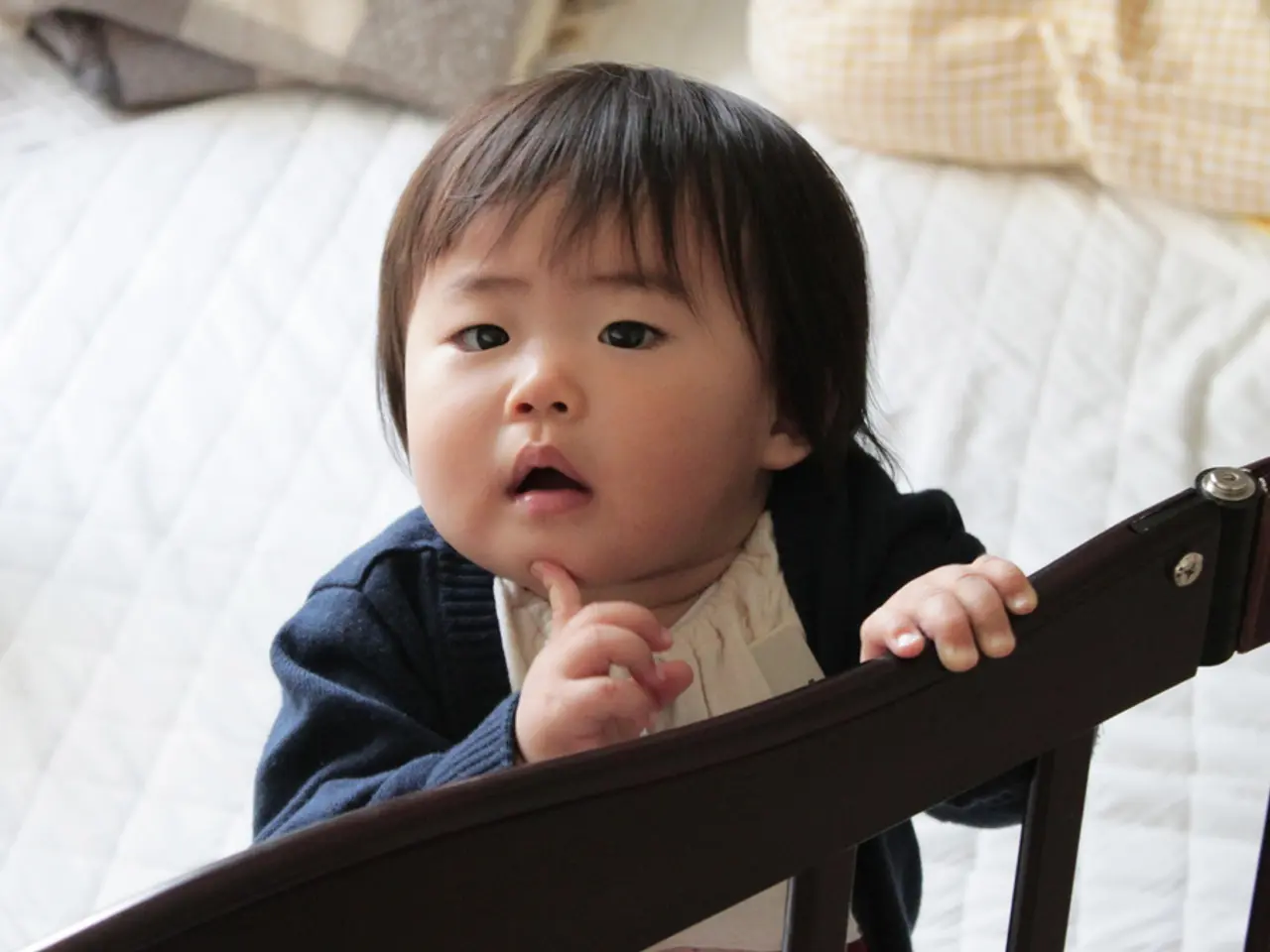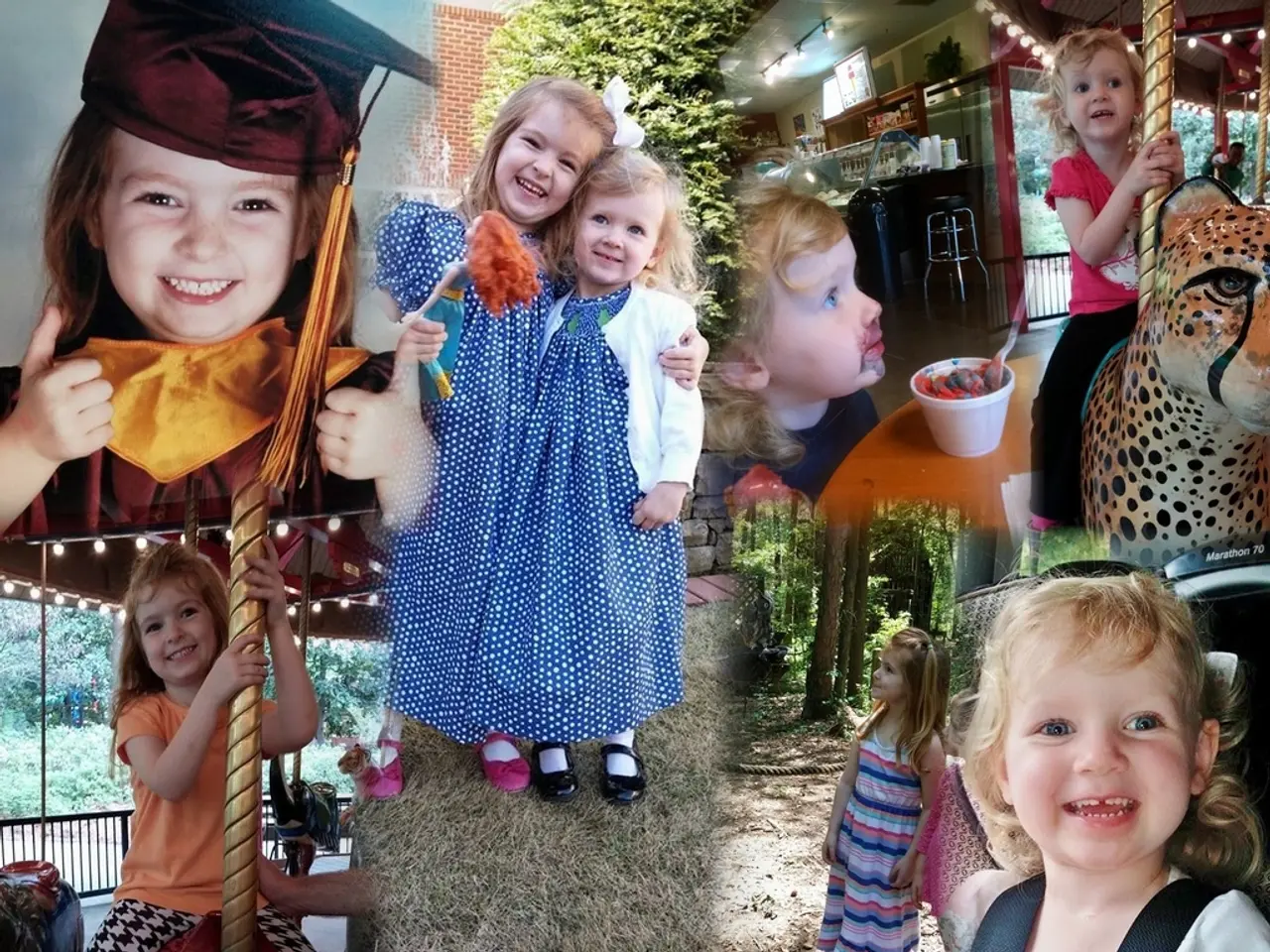Children's bedroom arrangement: A mum's perspective on bunk beds
=======================================================================================
Bunk beds can be a practical and fun addition to a child's room, providing extra sleeping space in shared bedrooms or maximising floor space. However, safety concerns are paramount, especially for younger children.
Angela Morris, Founder of JojoBeds, believes bunk beds are a brilliant solution for shared bedrooms, sleepovers, or maximising floor space. Reputable brands like JojoBeds and DFS focus on rigorous safety testing, robust materials, and smart design features for bunk beds.
Many bunk bed designs feature built-in shelves for books and toys, drawers within the frame for extra storage, and safety features like flat ladder steps and cut-out handles. Some high-quality bunk beds are modular, meaning they can be separated into twin beds later or adapted as children grow.
However, bunk beds may not be the most harmonious solution for siblings who are prone to arguing or have different sleep schedules. Night-time toilet trips can also be tricky with bunk beds, and changing sheets can be difficult.
For children under 6 years old, safety is of the utmost importance. The British Safety Standards (BS EN 747) should be met by all bunk beds. It is recommended to use only the bottom bunk, which is closer to the ground and presents a much lower risk of injury while still potentially offering some space-saving benefits.
To mitigate safety concerns, parents and caregivers should ensure the bunk bed is well-assembled and structurally stable to prevent collapse. Sturdy guardrails on both upper and lower bunks, with guardrails extending at least five inches above the mattress surface, are essential to prevent falls. Children under 6 should be prohibited from using ladders or climbing to the top bunk, as they lack coordination and judgment to do so safely.
Bunk beds should be placed away from windows and other hazards that could be blocked or cause injury in emergencies. Regular maintenance checks are necessary to tighten screws, replace worn or damaged parts, and confirm overall bed safety. Educating children about safe behaviour around bunk beds, such as no jumping, no rough play, and using ladders carefully when older, is also crucial.
In summary, the major precautions for bunk beds with children under 6 are age-appropriate bunk use (bottom bunk only), robust guardrails, stable assembly, safe placement, maintenance, and behavioural rules that reduce fall and entrapment risks. This approach aligns with established safety guidelines from child safety authorities and furniture standards.
For older children, bunk beds can bring a sense of novelty and adventure to bedtime. John Rastall, Head of Home at DFS, agrees that bunk beds are a smart, space-saving solution, especially in shared children's bedrooms. Single beds with built-in storage can be a good alternative to bunk beds, offering similar space-saving benefits without the safety concerns for younger children.
In conclusion, bunk beds can be a beautiful and fun addition to a child's room, but safety should always be a priority. By following safety guidelines and making informed decisions, parents and caregivers can ensure a safe and enjoyable experience for their children.
Interior design choices, such as bunk beds, can impact family dynamics and lifestyle, offering practical solutions for shared spaces or home-and-garden optimization. Yet, it's essential to prioritize relationships and nurture harmonious living by considering factors like sleep schedules and relationships between siblings when selecting these types of arrangements, like bunk beds.




